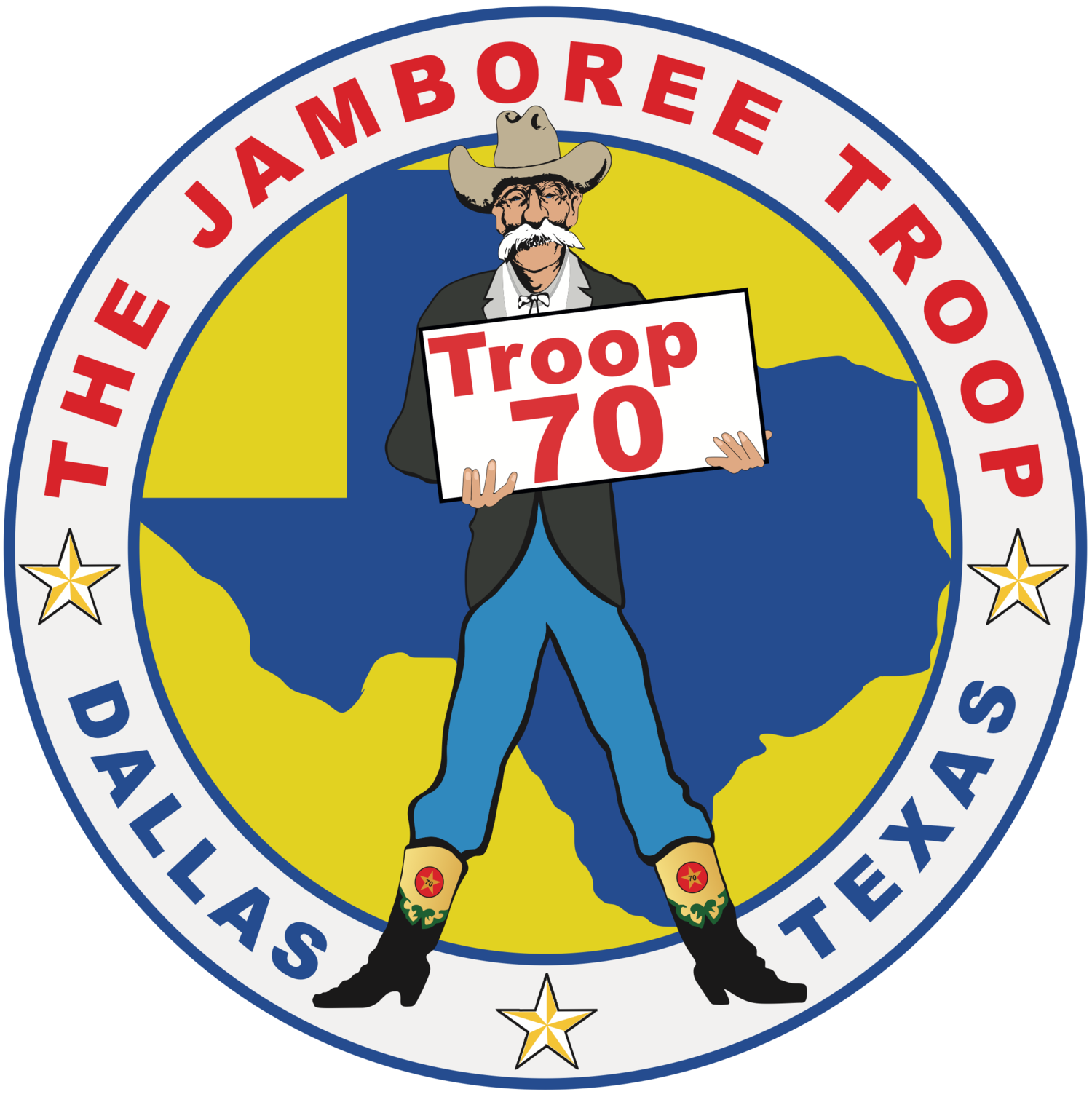Troop 70 Cobbler Competition Notes
Our winter cobbler campout is coming up. Are you ready for the fun?
To prepare for our friendly competition, let’s review Dutch oven baking. First thing, we will need a dutch oven. The troop has many, so make sure to get yours from the troop trailer. We use 12” Dutch ovens.
Next we need heat. For baking in a 12” Dutch oven:
325°F - 23 briquettes; 16 on lid and 7 underneath
350°F - 25 briquettes; 17 on lid and 8 underneath
375°F - 27 briquettes; 18 on lid and 9 underneath
400°F - 29 briquettes; 19 on lid and 10 underneath
425°F - 31 briquettes; 21 on lid and 10 underneath
450°F - 33 briquettes; 22 on lid and 11 underneath
Light the charcoal in a pyramid or in a chimney starter, and let them get hot. You will have about 30 to 45 minutes of cooking time. Most likely you will want to cook your creation at 350°F to 375°F.
If you are cooking in a fire, use about the same amount of coals as you would have used briquettes. You may want to have some extra coals or briquettes ready, depending on your baking time.
Optimally, for baking, arrange the coals evenly around the top and around the outside edge on the bottom. Keep your oven off the ground whenever possible. Moisture from the ground also will affect the coals. If you don’t cook directly on the ground, you won’t have to worry about this, and you are more likely to leave no trace. Several options include aluminum roasting pans, cookie sheets, utility pans, or even Dutch oven cooking tables.
Weather will affect your baking. If you are cooking in direct sunlight, especially in the summer, your oven will be hotter. If you are cooking at night, in higher humidity, or at higher elevations, you will lose heat. Remember to block the wind top keep the heat, if necessary.
We often bake at night, so make sure that you have enough light. You might start your baking when it’s light, but have to finish in the dark. A thermometer for Dutch oven cooking is a secret weapon that most people won’t bring.
So now we know how to cook it, what should we cook. There are a variety of the recipes for different types of dump cakes or Dutch oven cobblers, and most are very forgiving.
Here are some (untested, caveat emptor) examples:
Cake and Berry Campfire Cobbler
Why constrain yourself to cobblers?
The last thing that you need to do is clean and re-season the cast iron. The best way to clean your cast iron Dutch oven is to not have to clean it. This is especially true when you are baking. Either aluminum or parchment paper liners will reduce or eliminate the mess, so cleaning is a breeze. You can also use heavy-duty (not regular) aluminum foil to line the oven, but make sure it seals properly. As we learned from Winter Camp, wax paper and cheap aluminum foil, are not good choices. Remember to oil the oven before storage.
If you must clean the cast iron, consider these instructions.
Good luck. The competition will be tasty.
